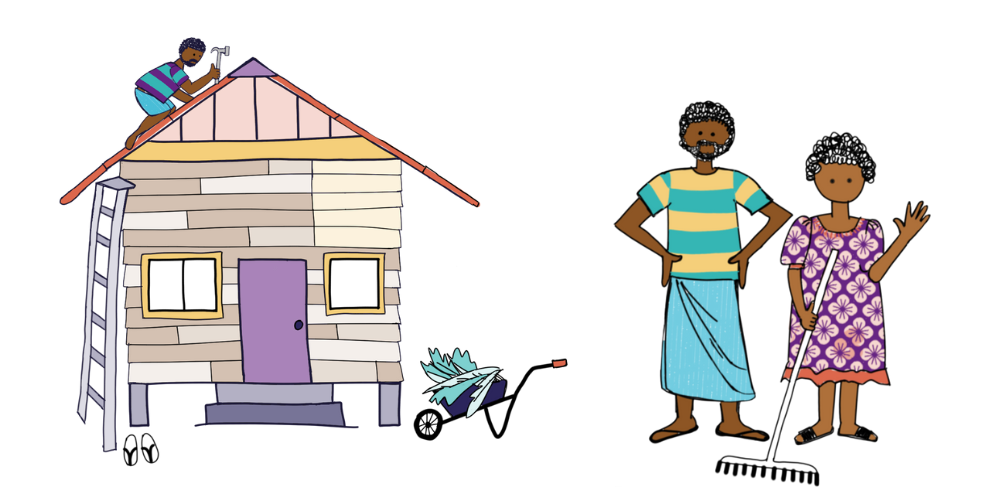PERCEPTIONS OF HOW SOCIAL PROTECTION IS SPENT IN THE PACIFIC AND TIMOR-LESTE
Perceptions of how social protection is spent in the Pacific and Timor-Leste
This blog is available in an easy read version.
Social protection can bring many benefits, from providing money to cover living costs to helping communities rebuild after a crisis.
However, there are also negative views of social protection, which global research shows are often unfounded and can distort policymaking.
The Australian Government’s Partnerships for Social Protection (P4SP) program, in collaboration with Sustineo, explored this issue through its Evidence Review: Social Protection in the Pacific and Timor-Leste.
The review found that negative perceptions of social protection raised in global literature are also acknowledged in literature from the Pacific and Timor-Leste, but the evidence is limited. In the 242 publications studied, there was limited and patchy evidence to refute or support the perceptions.
Given the limited evidence, we spoke with three Pacific experts to discuss these findings and learn how social protection perceptions appear in their work and research.
Cash transfers used fully for daily needs
There are several views on how social protection transfers are spent.
A common perception in the Pacific and Timor-Leste is that cash transfers lead to higher spending on "temptation goods" like alcohol and cigarettes.
However, evidence on this topic is sparse and mostly focused on transfers made in response to shocks.
Studies on emergency cash transfers in Fiji, following Tropical Cyclones Winston and Harold and the COVID-19 pandemic, suggest that most funds were used for essentials, including food, materials for home repairs, clothing, medicine, and school supplies.
In Timor-Leste, research showed that most of the money from COVID-19 pandemic cash transfers was spent on food, with some also directed toward business investments, clothing, transport, and household items.
Professor Steven Ratuva, Pro-Vice Chancellor for the Pacific at the University of Canterbury, has seen this spending pattern in his research on social protection.
"When people are desperate, they don't use the money to buy cars. They use it to feed themselves."
Another perception is that transfers are fully used rather than invested, but this is rarely addressed in Pacific literature.
This is to be expected as allowance levels are based on the cost of living and aren’t intended to position people to save.
"Communities know cash transfers won’t happen every day. Every month, it comes and goes," said Prof. Ratuva.
The Evidence Review also found little evidence to support the idea that cash transfers foster dependency in the Pacific and Timor-Leste.
Insights from remittance research
While the evidence on social protection spending is limited, research on a related topic—remittance spending—offers some insights.
Remittances can be seen as a form of community-based social protection, whereby people working overseas send cash transfers to relatives back home.
This differs from state-based social protection, consisting of smaller, regular and predictable transfers from the government.
Remittance research shows that community perceptions can influence remittance spending patterns in some contexts.
"They [recipients] are more worried about how the community views them," said Dr Litea Meo-Sewabu, Associate Professor in Social Work and Communities at Western Sydney University.
“The community knows that a person is away [working abroad] and how relatives use the money that's being sent.”
Impact on policymaking and research
Inaccurate perceptions can lead to harmful consequences, particularly for policymaking.
"If the perceptions are not backed by evidence, then they are myths," said Josephine Kalsuak, Team Leader for Mainstreaming and Capacity Building at the Pacific Community.
"The myths can create a negative impact where the government questions why they should commit to social protection if citizens are not utilising it as intended."
The Evidence Review highlights the need for further research to better understand the spending behaviours of social protection beneficiaries, especially in non-emergency situations and across a wider range of locations.
"We have our informal social protection, but we are now in a different time where cash is important.”
Ms Kalsuak calls for greater visibility of and integration of community-based social protection in such studies.
“In the Pacific, we have our existing traditional law, our families, and informal law. If a family member is sick, we take care of the family member, whether they're working or not – it's our responsibility.
“Understanding what social protection means for people in the Pacific can help clarify those perceptions around social protection,” she added.



